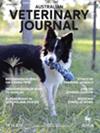Milk as a diagnostic fluid to monitor viral diseases in dairy cattle
Abstract
Background
Infectious viral diseases in dairy cattle have substantial implications for milk production, quality and overall animal health. Diagnostic tools providing reliable results are crucial for effective disease control at the farm and industry level. Pooled or bulk tank milk (BTM) can be used as a cost-effective aggregate sample to assess herd disease status in dairy farms.
Findings
Detection of pathogens or specific antibodies in milk can be used for monitoring endemic diseases within-farm, region or country-level disease surveillance and to make informed decisions on farm management. The suitability of assays applied to pooled milk samples relies on validation data of fit-for-purpose tests to design an optimal testing strategy. Diverse approaches and variable scope of studies determining test accuracy need to be critically appraised before sourcing the parameters to design sampling strategies and interpreting surveys. Determining if BTM or pooled milk is the best approach for a disease management programme should carefully consider several aspects that will impact the accuracy and interpretation, for example, the size of the lactating herd, the risk of infection in the lactating and non-lactating groups, the expected within-herd prevalence, the duration of infection, the duration and concentration of antibodies in milk and use of vaccination.
Conclusions
There are examples of tests on BTM samples providing efficient assessments of the herd disease status and supporting disease control programmes for viral diseases. However, challenges arise in pooled milk testing due to the need for accurate estimates of the imperfect sensitivity and specificity of the assays. Integration of new biotechnologies could enhance multiplexing and data interpretation for comprehensive surveillance. The development of highly sensitive assays is necessary to meet the demands of larger dairy herds and improve disease detection and assessment.

 求助内容:
求助内容: 应助结果提醒方式:
应助结果提醒方式:


